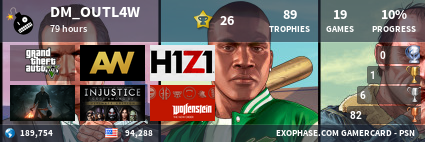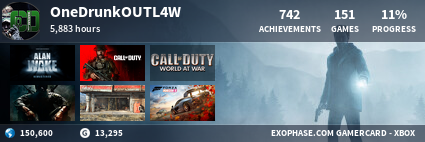We’re about 60% of the way through the regular season, the Major League trading deadline is coming in a week and a half and if your league has its own deadline, it’s also likely coming at some point over the next month. For me personally, trading is one of the most frustrating activities in fantasy baseball. Whether your potential trading partner’s player valuations are idiotic or his response for declining your offer that you genuinely believe helps both teams is illogical, I don’t really enjoy the whole process. It feels more like work to me than something fun. But, sometimes we simply need to make a trade, whether to fill a hole using our depth or to plug a categorical weakness by utilizing a strength.
Through the first couple of months of the season, I’m pretty much a slave to my preseason dollar values. It guides me through my trade negotiations and ensures that I am valuing a player’s statistical contributions correctly. It also guarantees that I am getting enough in return for the value that I am giving up, given what we currently know. Obviously, my crystal ball doesn’t always work, so in hindsight, it is very possible I ended up not getting enough value in return.
That said, as difficult as it is for me to do, now is just about the time at which those values could be thrown away. It is still important to have an idea about how a 15 HR/30 SB guy compares to a 35 HR/5 SB guy, but the worry about getting completely fair value is no longer as concerning as it was earlier in the season.
Context is now king. You know what categories your team is weak in and what it’s strong in. Unless you just got five players back from the DL who all contribute in the same offensive category (five power guys or five speed guys), then the shape of your team’s performance is unlikely to change that dramatically if you fail to make a change over the rest of the season.
It’s time to key in on every category and add up how many points you can gain and lose in all of them. If one of the categories is very bunched up and you can both gain and lose a lot of points, that is one you might want to bolster. For a category with limited potential movement, you could either stand pat or identify a player you could trade away without dramatically hurting any of the other categories.
I mentioned earlier that you cannot worry about whether you are getting equal value anymore. If you need speed and have power to spare, it doesn’t matter that Nelson Cruz was likely valued as a top 20 or top 25 outfielder at your draft. You trade him for Nate McLouth and smile. Even though McLouth was likely a free agent pickup early in the season and you are slightly embarrassed by making what appears to be a buy high trade, you will gain more points by making the switch than by trying to avoid looking silly and doing nothing. If McLouth is the best speedster being offered to you, then you click the accept button and enjoy the steals points you will gain.
Of course, the standard 5×5 fantasy categories are pretty interrelated. It is difficult to make a trade without losing something somewhere. This is especially true when making these power for speed type deals. Though, this doesn’t always apply, like when making a trade based on a different valuation of a player, such as Domonic Brown for Edwin Encarnacion, whose season-to-date stats are very similar.
The last thing to remember is that at this point, it is much easier to make a run in a counting stat category than a ratio category. Furthermore, any of the three rate stat categories are pretty fickle over a relatively small sample size. So although you may think you’re boosting your batting average by “upgrading” from Andrelton Simmons to Jhonny Peralta, keep BABIPs in mind and that 40% of a season isn’t nearly enough for luck to run its course. So what I’m saying is that yes, Jeff Locke could post an ERA a full run and a half below Justin Verlander‘s. As such, you will probably experience a greater impact on your point total by acquiring a hitter, rather than a starting pitcher, just because of the counting stat categories being four for hitters and just two for starting pitchers.
Happy trading!

More...
Through the first couple of months of the season, I’m pretty much a slave to my preseason dollar values. It guides me through my trade negotiations and ensures that I am valuing a player’s statistical contributions correctly. It also guarantees that I am getting enough in return for the value that I am giving up, given what we currently know. Obviously, my crystal ball doesn’t always work, so in hindsight, it is very possible I ended up not getting enough value in return.
That said, as difficult as it is for me to do, now is just about the time at which those values could be thrown away. It is still important to have an idea about how a 15 HR/30 SB guy compares to a 35 HR/5 SB guy, but the worry about getting completely fair value is no longer as concerning as it was earlier in the season.
Context is now king. You know what categories your team is weak in and what it’s strong in. Unless you just got five players back from the DL who all contribute in the same offensive category (five power guys or five speed guys), then the shape of your team’s performance is unlikely to change that dramatically if you fail to make a change over the rest of the season.
It’s time to key in on every category and add up how many points you can gain and lose in all of them. If one of the categories is very bunched up and you can both gain and lose a lot of points, that is one you might want to bolster. For a category with limited potential movement, you could either stand pat or identify a player you could trade away without dramatically hurting any of the other categories.
I mentioned earlier that you cannot worry about whether you are getting equal value anymore. If you need speed and have power to spare, it doesn’t matter that Nelson Cruz was likely valued as a top 20 or top 25 outfielder at your draft. You trade him for Nate McLouth and smile. Even though McLouth was likely a free agent pickup early in the season and you are slightly embarrassed by making what appears to be a buy high trade, you will gain more points by making the switch than by trying to avoid looking silly and doing nothing. If McLouth is the best speedster being offered to you, then you click the accept button and enjoy the steals points you will gain.
Of course, the standard 5×5 fantasy categories are pretty interrelated. It is difficult to make a trade without losing something somewhere. This is especially true when making these power for speed type deals. Though, this doesn’t always apply, like when making a trade based on a different valuation of a player, such as Domonic Brown for Edwin Encarnacion, whose season-to-date stats are very similar.
The last thing to remember is that at this point, it is much easier to make a run in a counting stat category than a ratio category. Furthermore, any of the three rate stat categories are pretty fickle over a relatively small sample size. So although you may think you’re boosting your batting average by “upgrading” from Andrelton Simmons to Jhonny Peralta, keep BABIPs in mind and that 40% of a season isn’t nearly enough for luck to run its course. So what I’m saying is that yes, Jeff Locke could post an ERA a full run and a half below Justin Verlander‘s. As such, you will probably experience a greater impact on your point total by acquiring a hitter, rather than a starting pitcher, just because of the counting stat categories being four for hitters and just two for starting pitchers.
Happy trading!
More...












